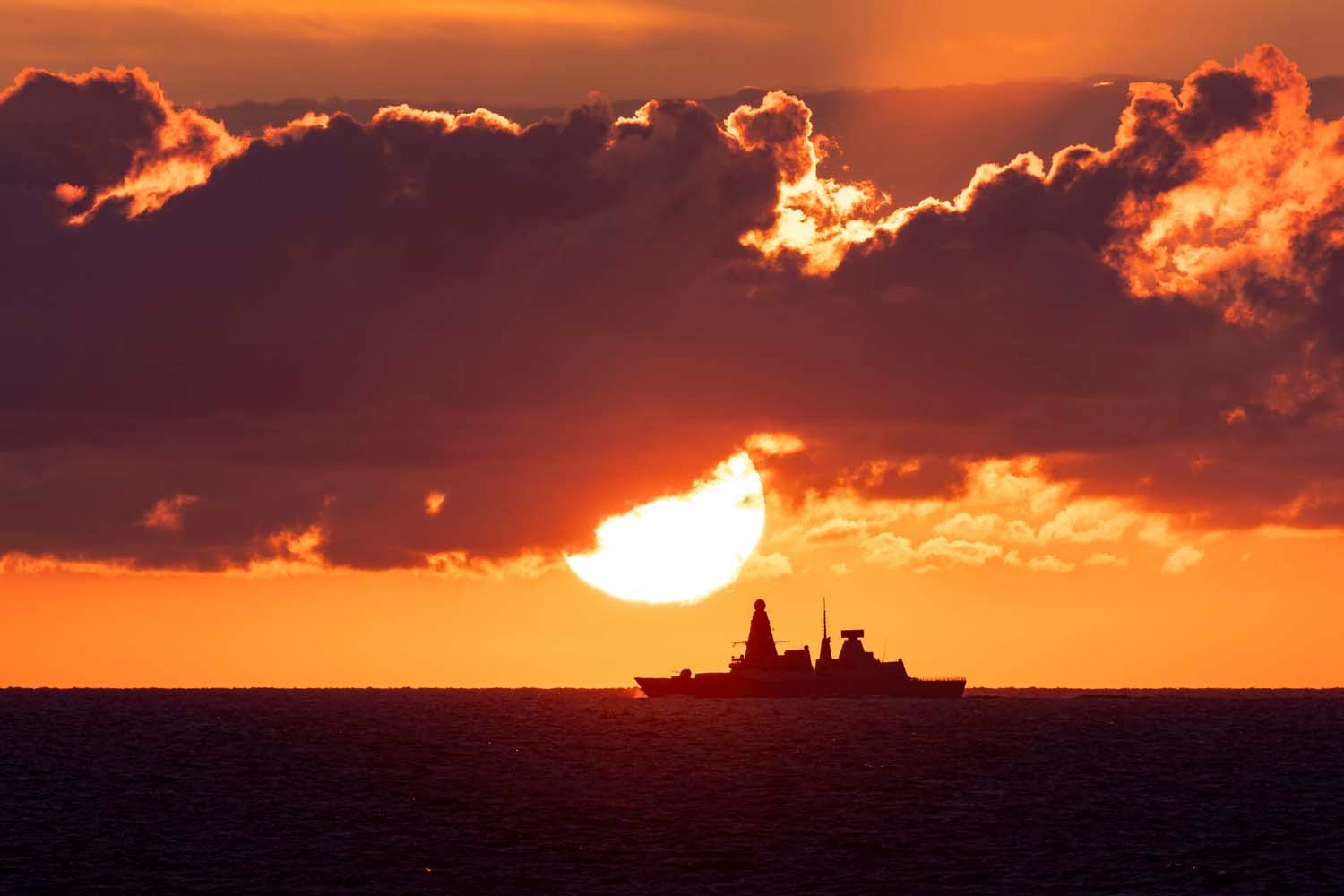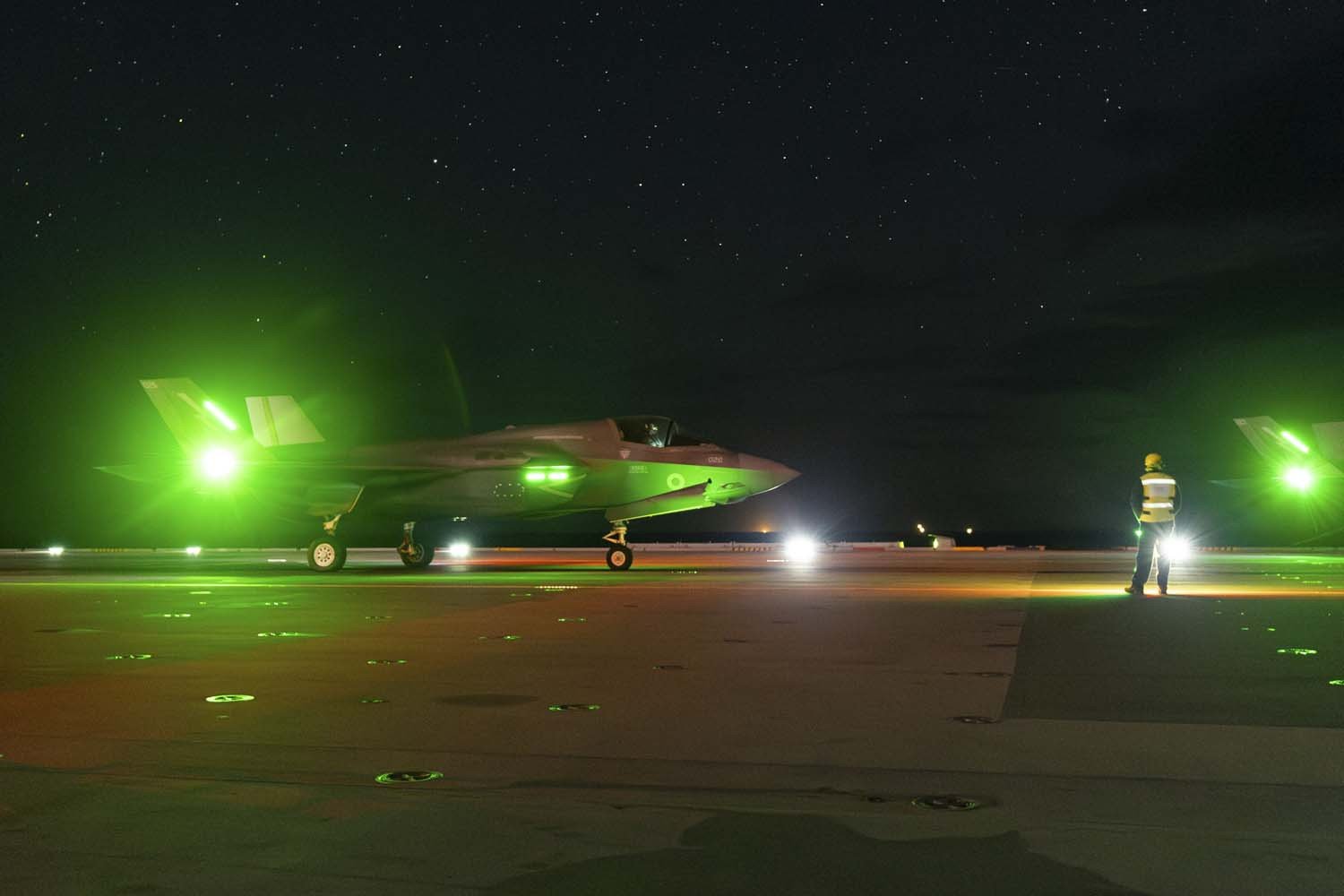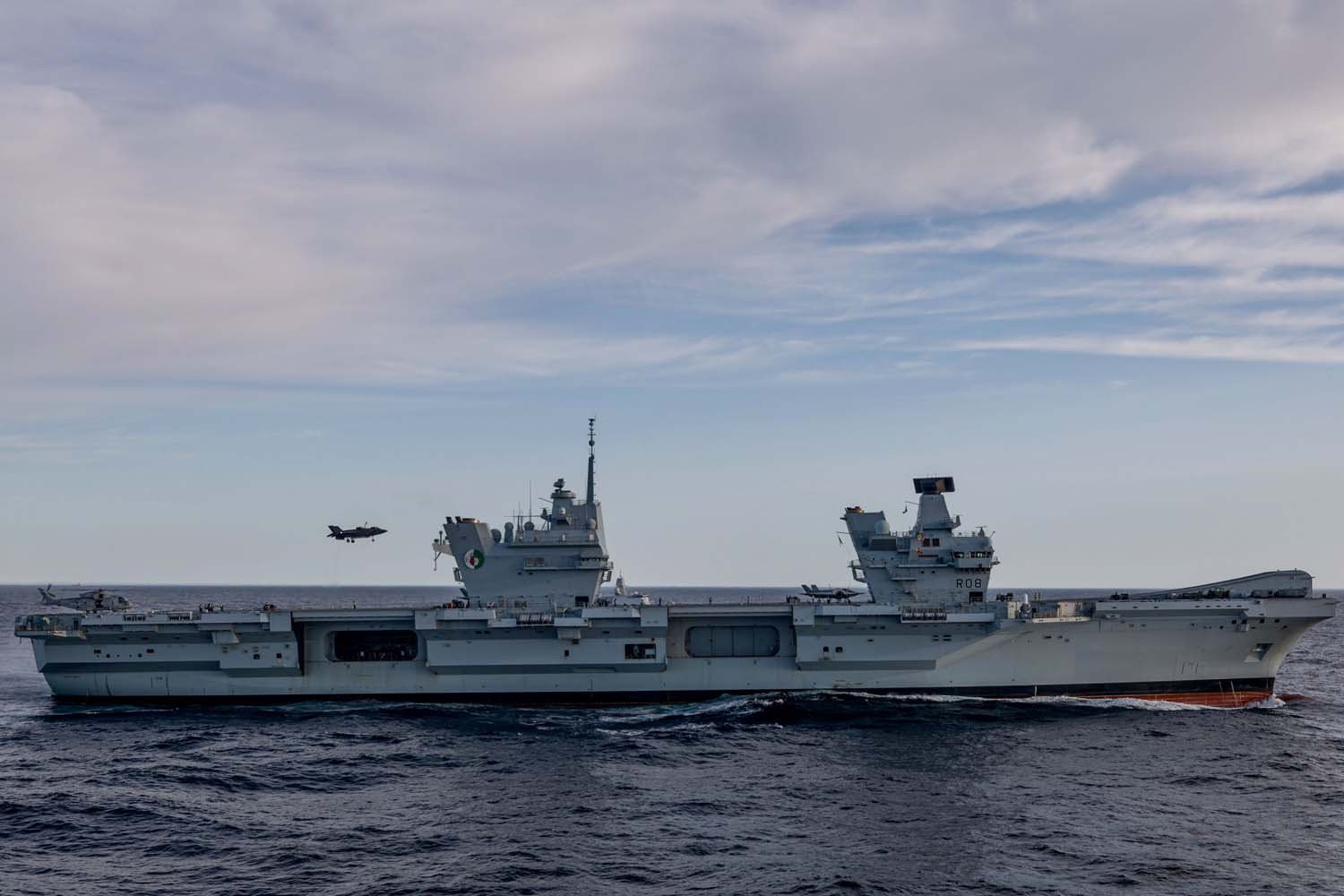HMS Queen Elizabeth and her embarked jets and helicopters have proven their ability to provide the “punch” of the UK Carrier Strike Group during a series of simulated strike missions alongside international partners.
The UK flagship has completed the first phase of her autumn deployment with simulated missions in the North Sea and Norwegian Sea.
The aircraft carrier was joined by Type 45 destroyer HMS Diamond; tanker RFA Tideforce; Norwegian ships Otto Sverdrup and Maud; Dutch ships De Zeven Provincien and Van Amstel; and Belgian frigate Louise Marie for the combat-style training in northern Europe.
It saw HMS Queen Elizabeth’s F-35 Lightning fighter jets of 617 Squadron, the Dambusters, Merlin helicopters from 820 Naval Air Squadron and Wildcat helicopters from 815 and 847 Naval Air Squadrons carry out simulated missions, from defending against air threats to suppressing enemy air defences and strike attacks.
The activity came as part of Exercise Cobra Warrior, the Royal Air Force’s largest annual exercise, which saw the different units face different tasking each day – from destroying a target to rescuing down aircrew.
This included the embarked F-35s tasked to find surface to air threats and destroy them; fly ahead of any strikes to clear the air and allow a clean run to the target and provide close cover to deter hostile fighters. It would have seen a simulated target represent a threat with protection – the job of the fighter jets would be to destroy it without loss.
HMS Queen Elizabeth is leading the UK Carrier Strike Group deployment this autumn to the Norwegian Sea and North Atlantic, underlining the UK’s commitment to security and stability in Europe.
The carrier and her helicopters also proved their ability to support any serious medical incidents within the task group including life support, advanced resuscitation techniques and trauma surgery – known as a Role 2 Afloat Team.
The 22-strong team have the specialist knowledge and skills to deal with a range of potential medical emergencies and are supported by the Merlin helicopters which can do casualty evacuations to and from the carrier.
The next phase of the carrier deployment – with Type 23 frigate HMS Portland now part of the task group – will see UK forces working alongside ships and personnel from Joint Expeditionary Force (JEF) nations. JEF is a high-readiness task group committed to regional security that can respond to crises either alongside or independent of NATO.
Alongside the UK, other Joint Expeditionary Force member nations include Denmark, Estonia, Finland, Latvia, Lithuania, the Netherlands, Norway and Sweden.
HMS Queen Elizabeth and JEF nations will show their ability to conduct air operations into Norway, Sweden and Finland.

















